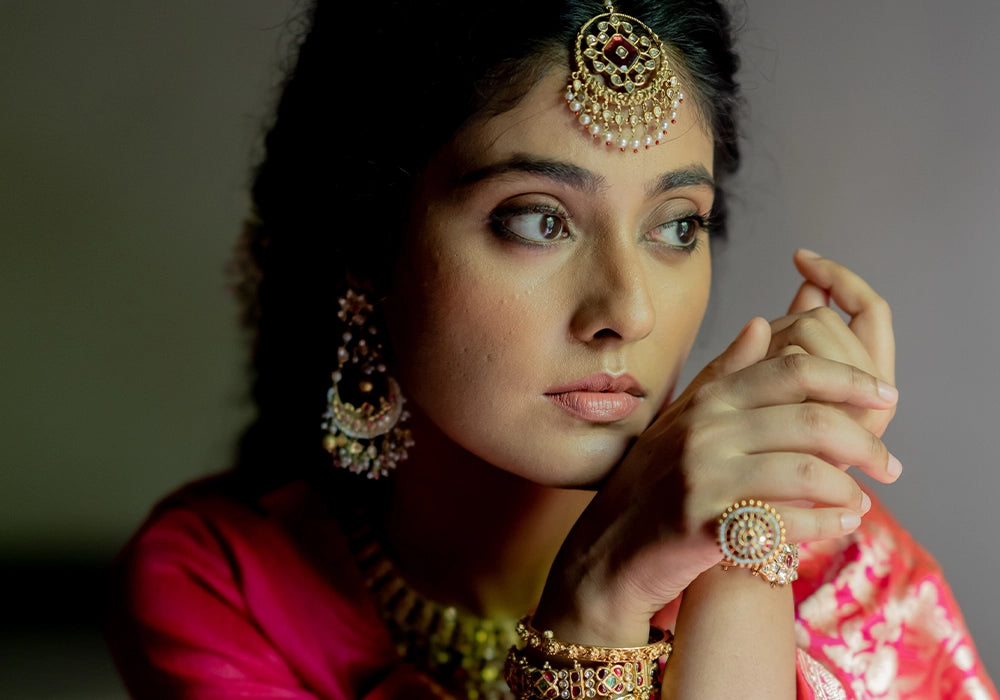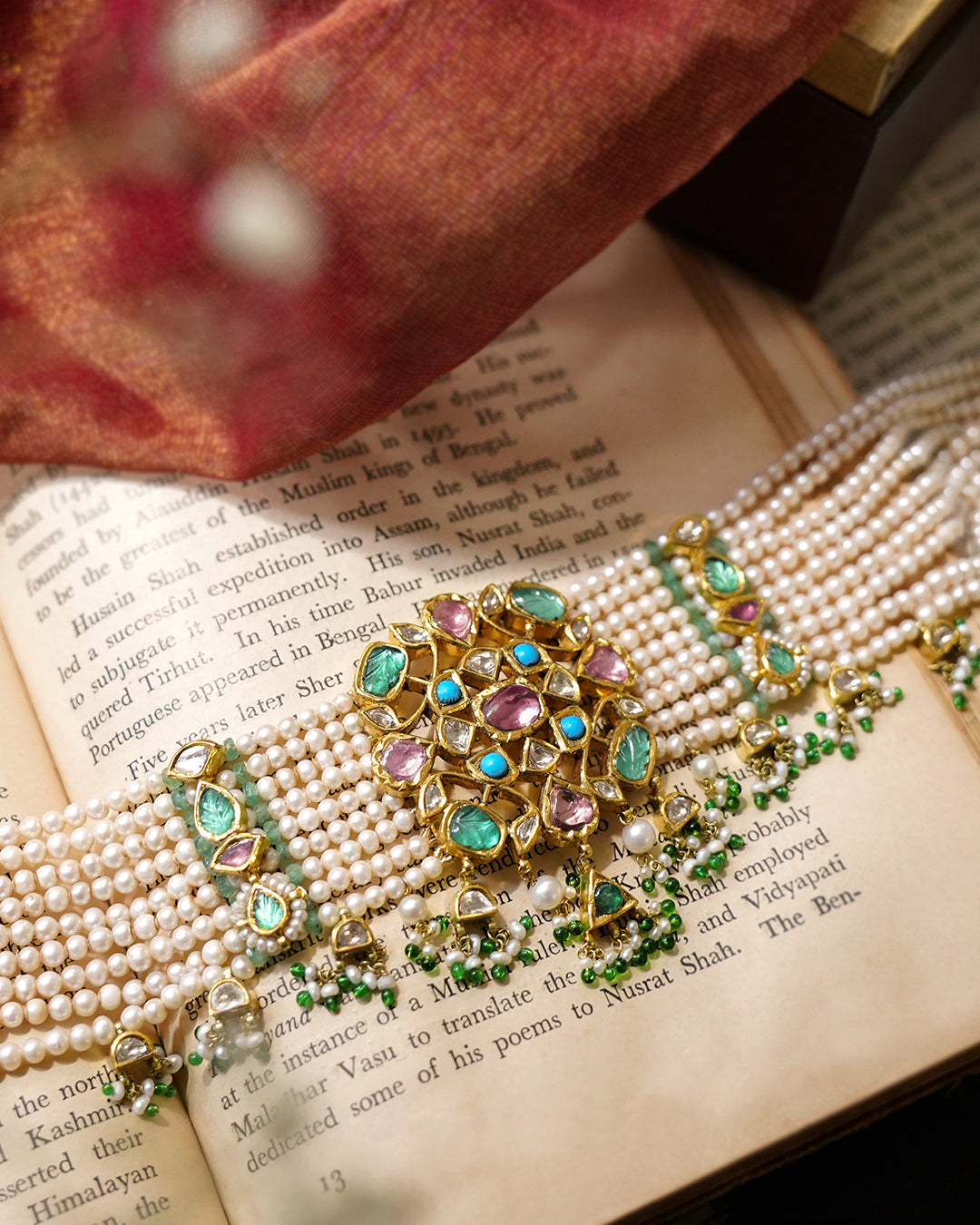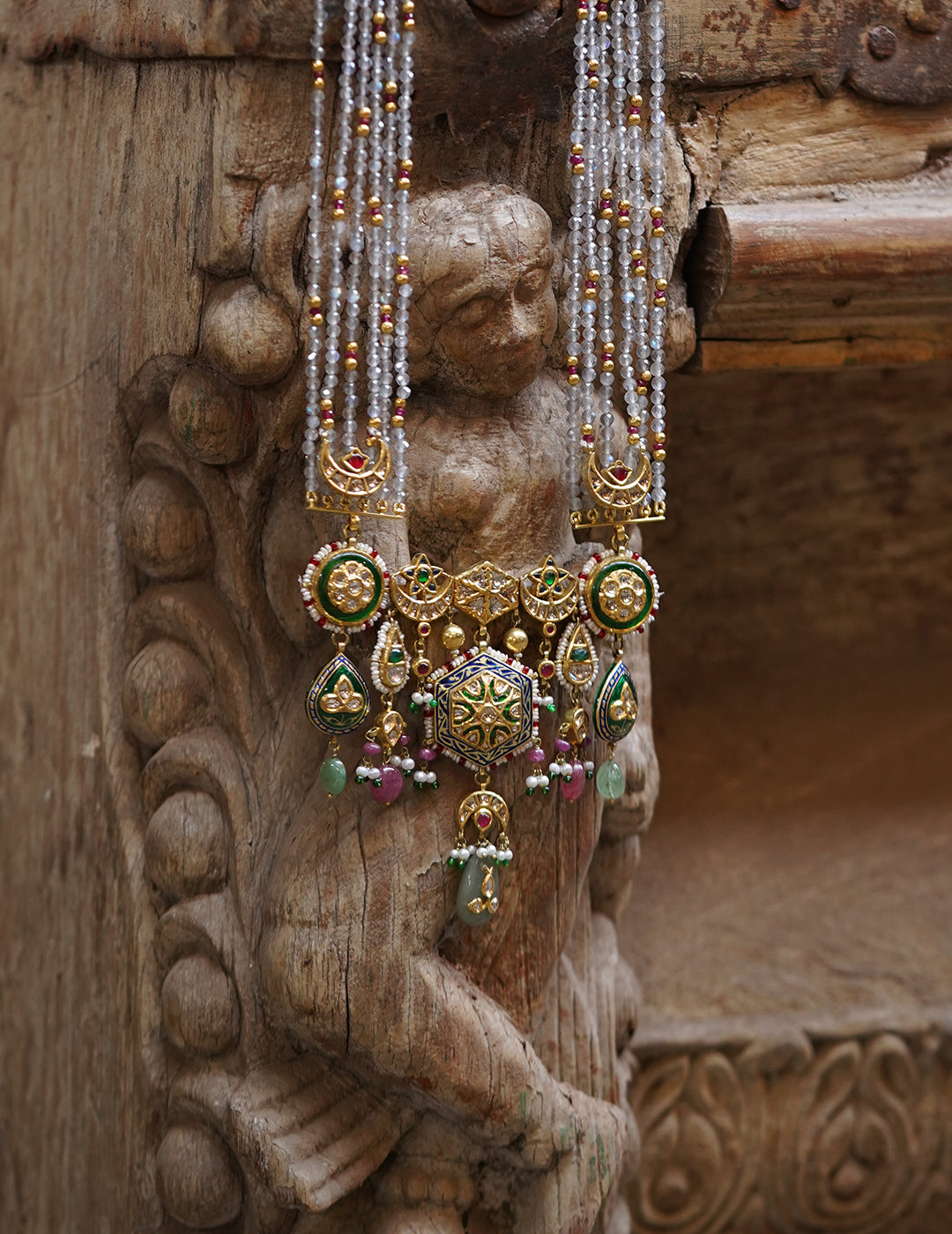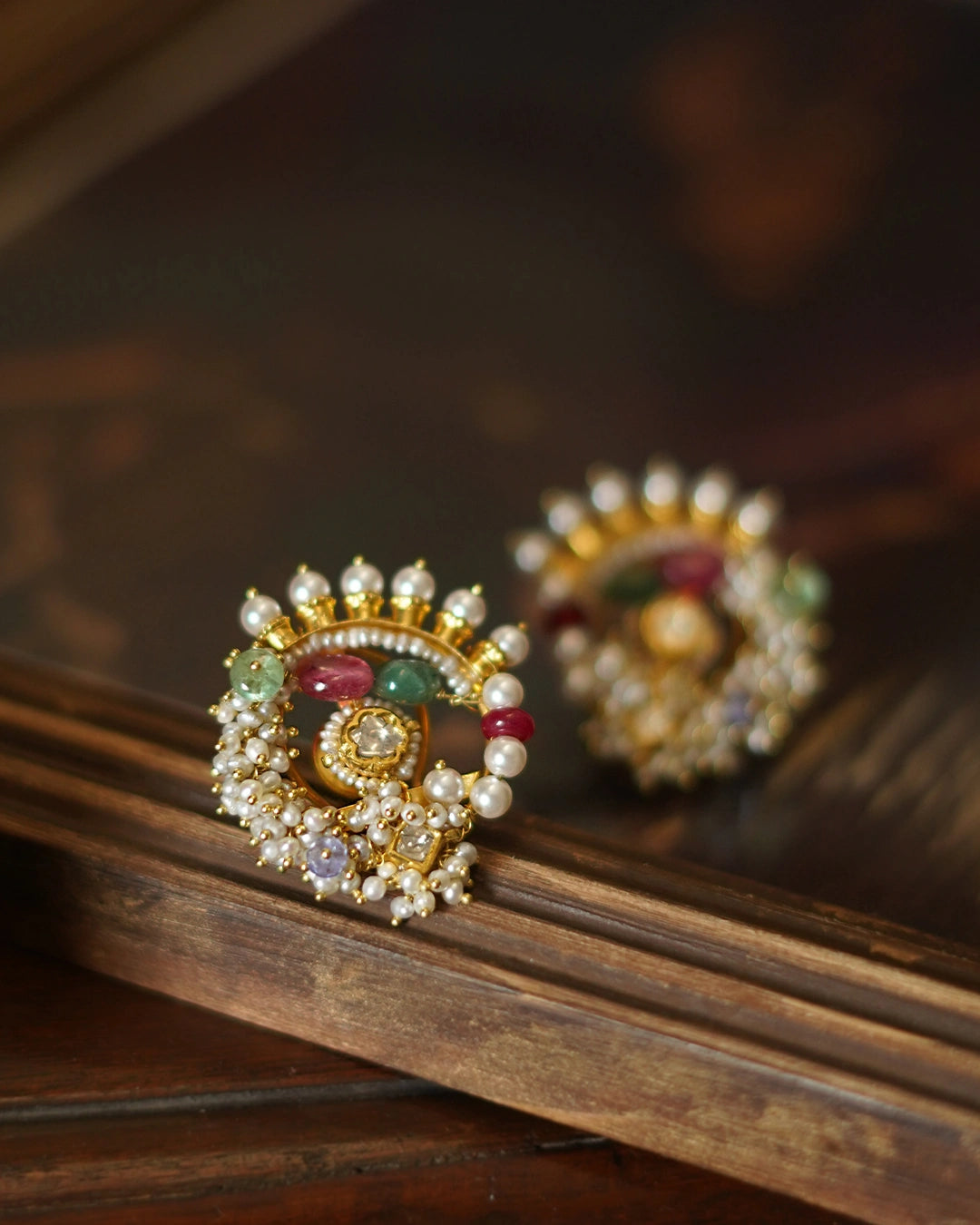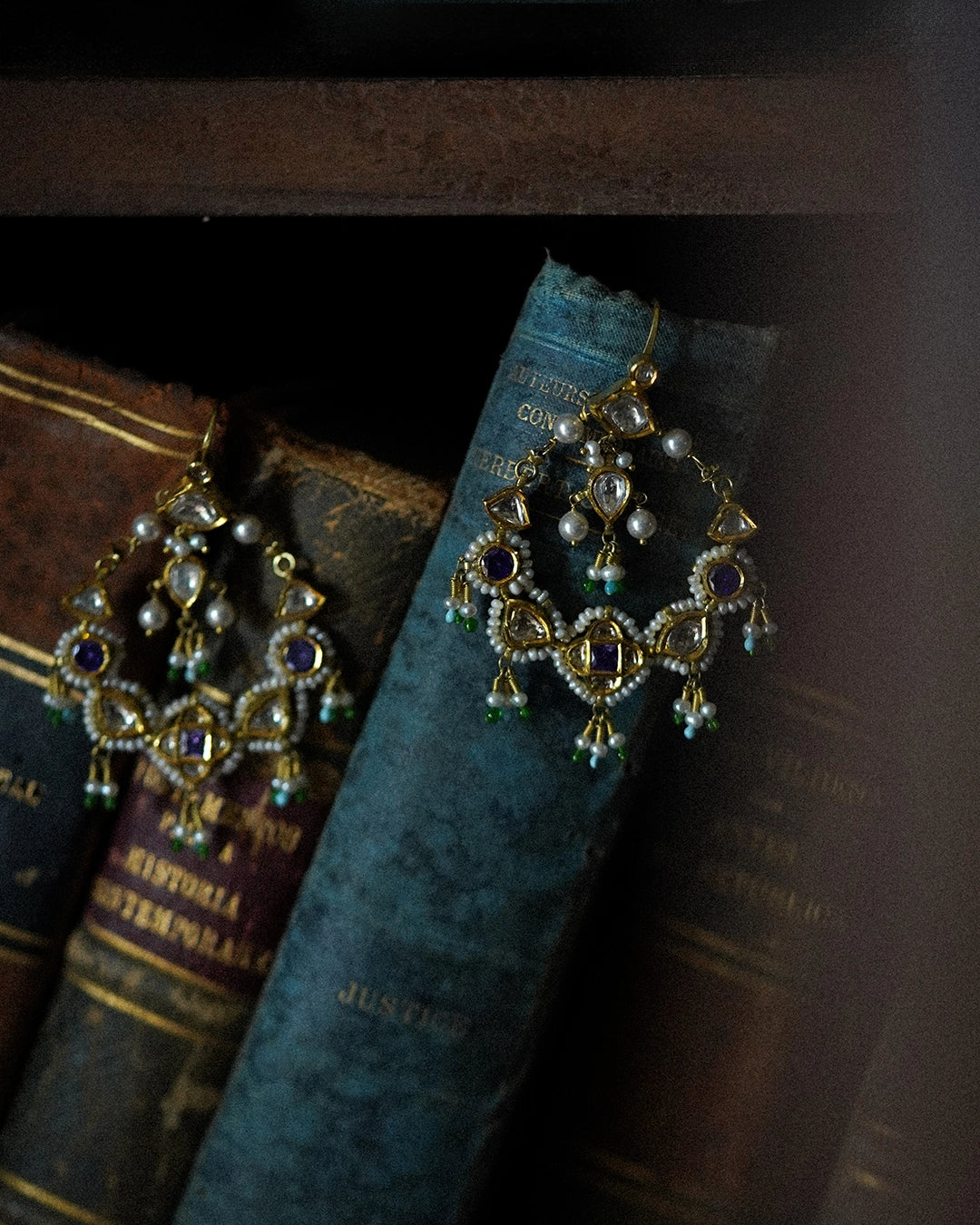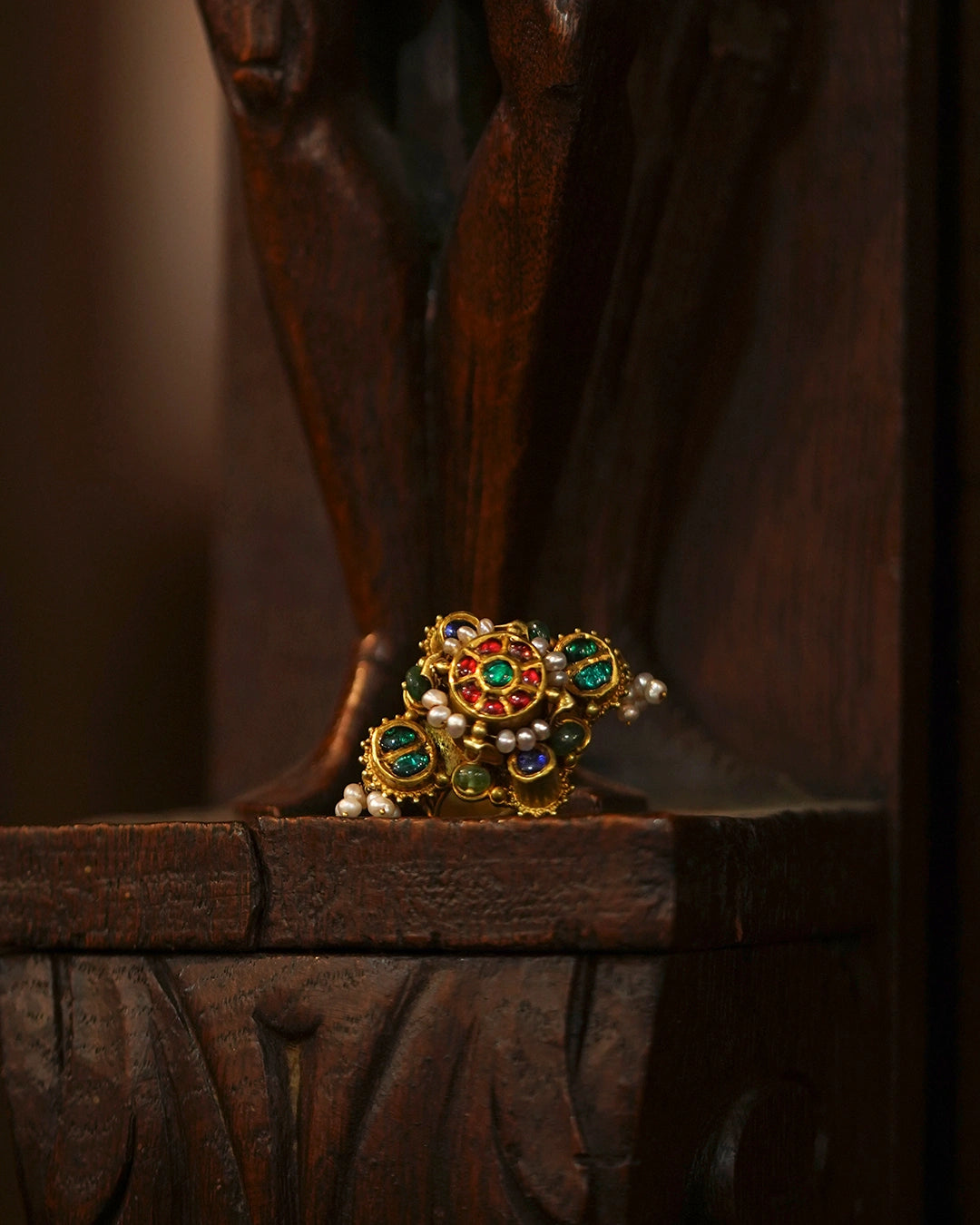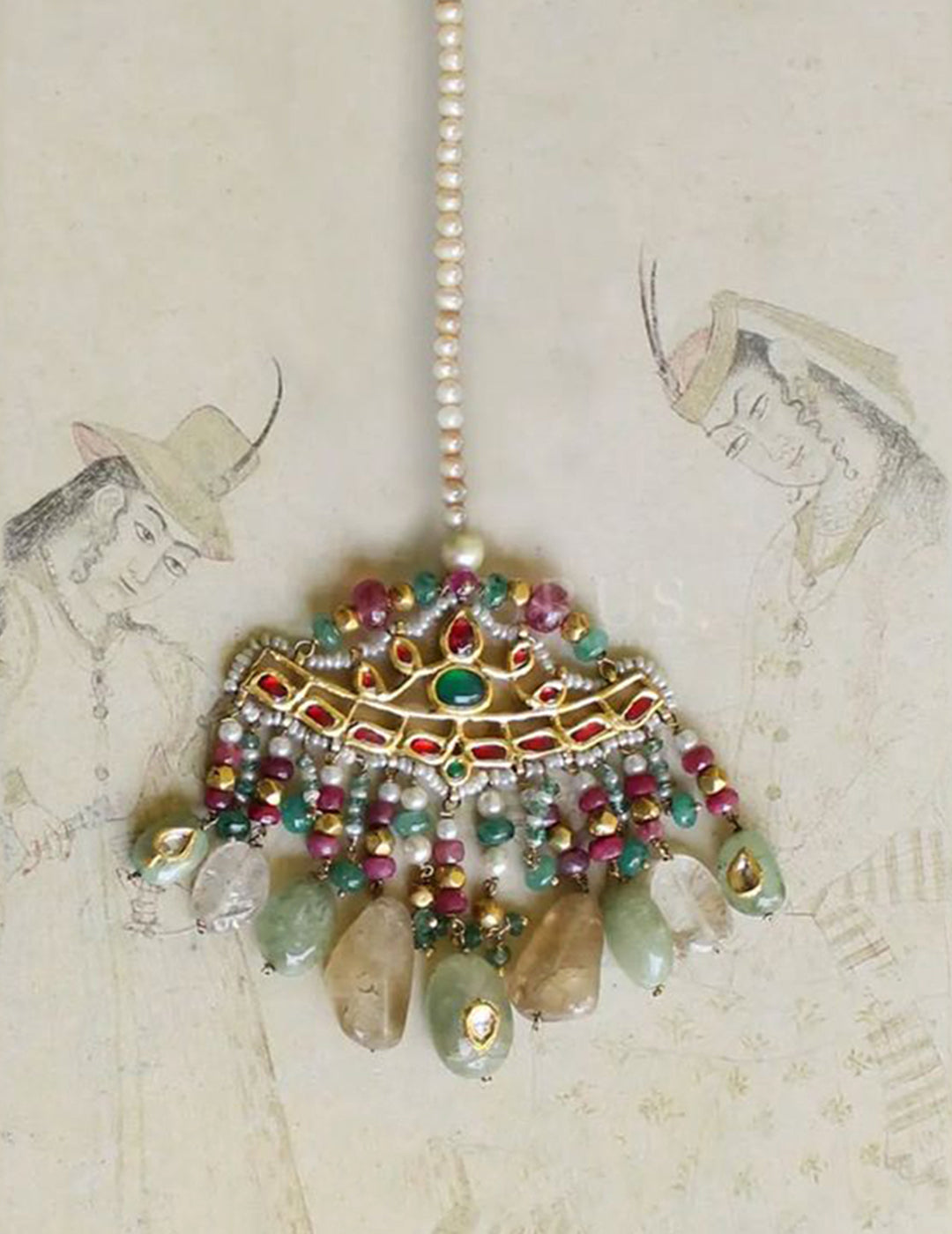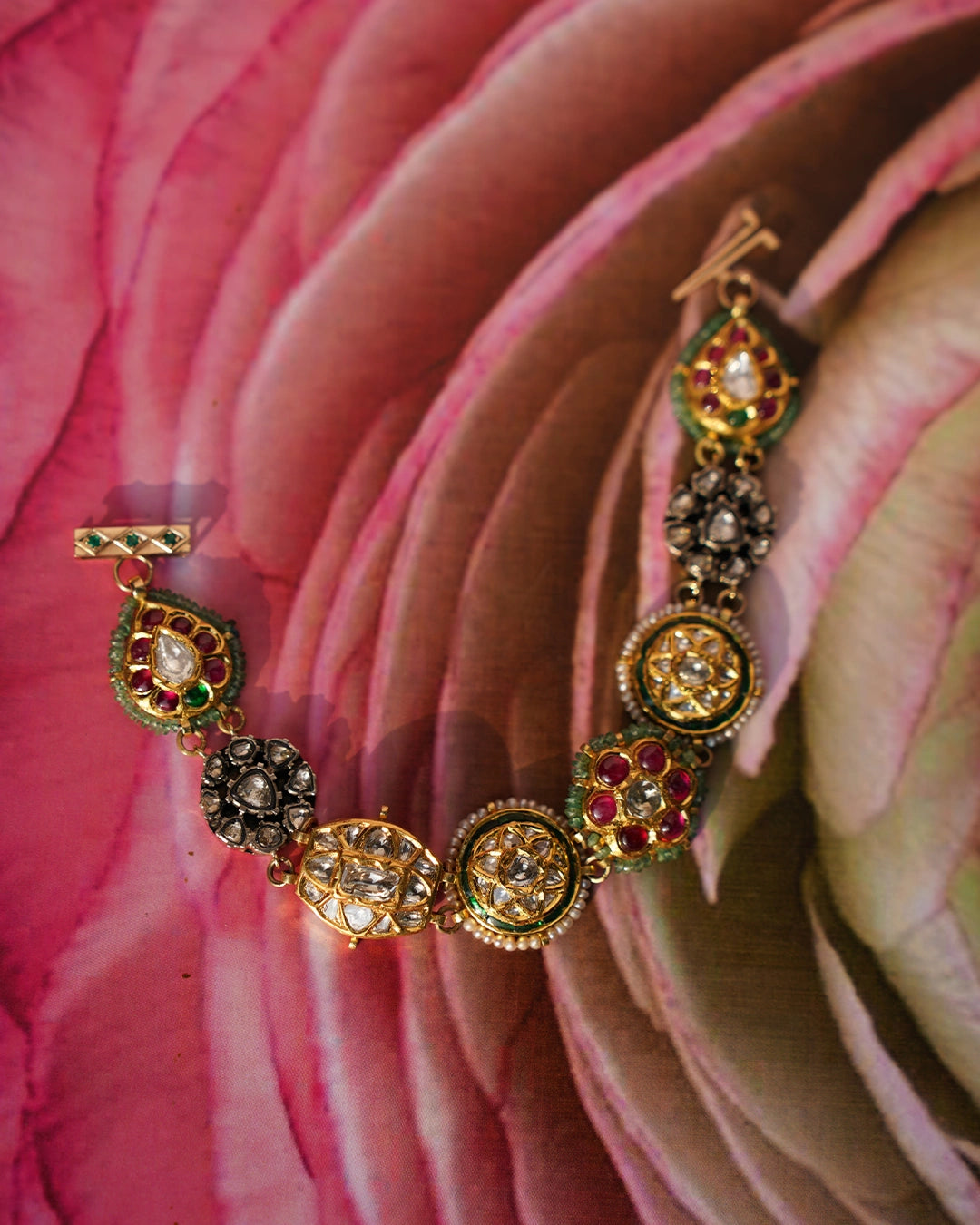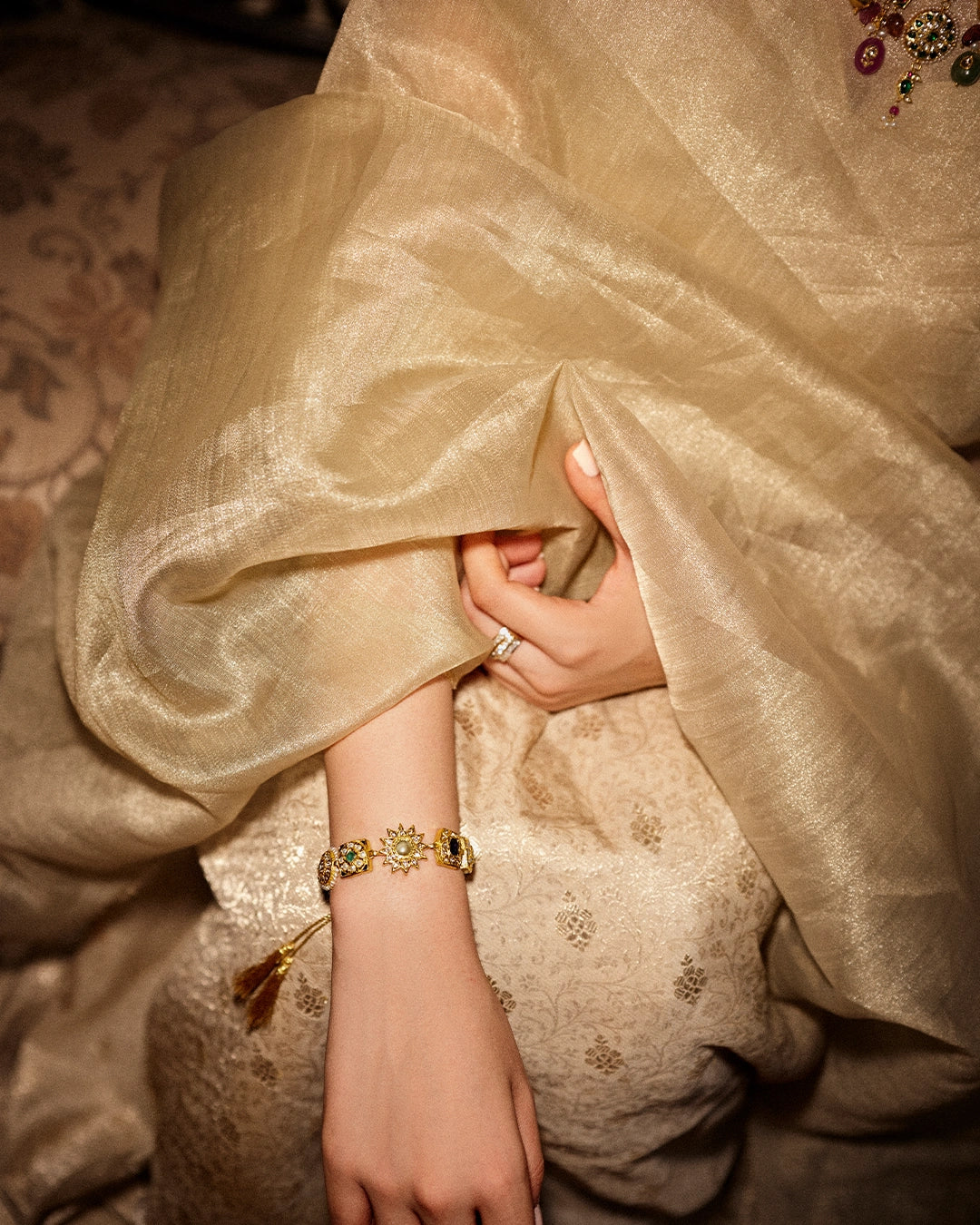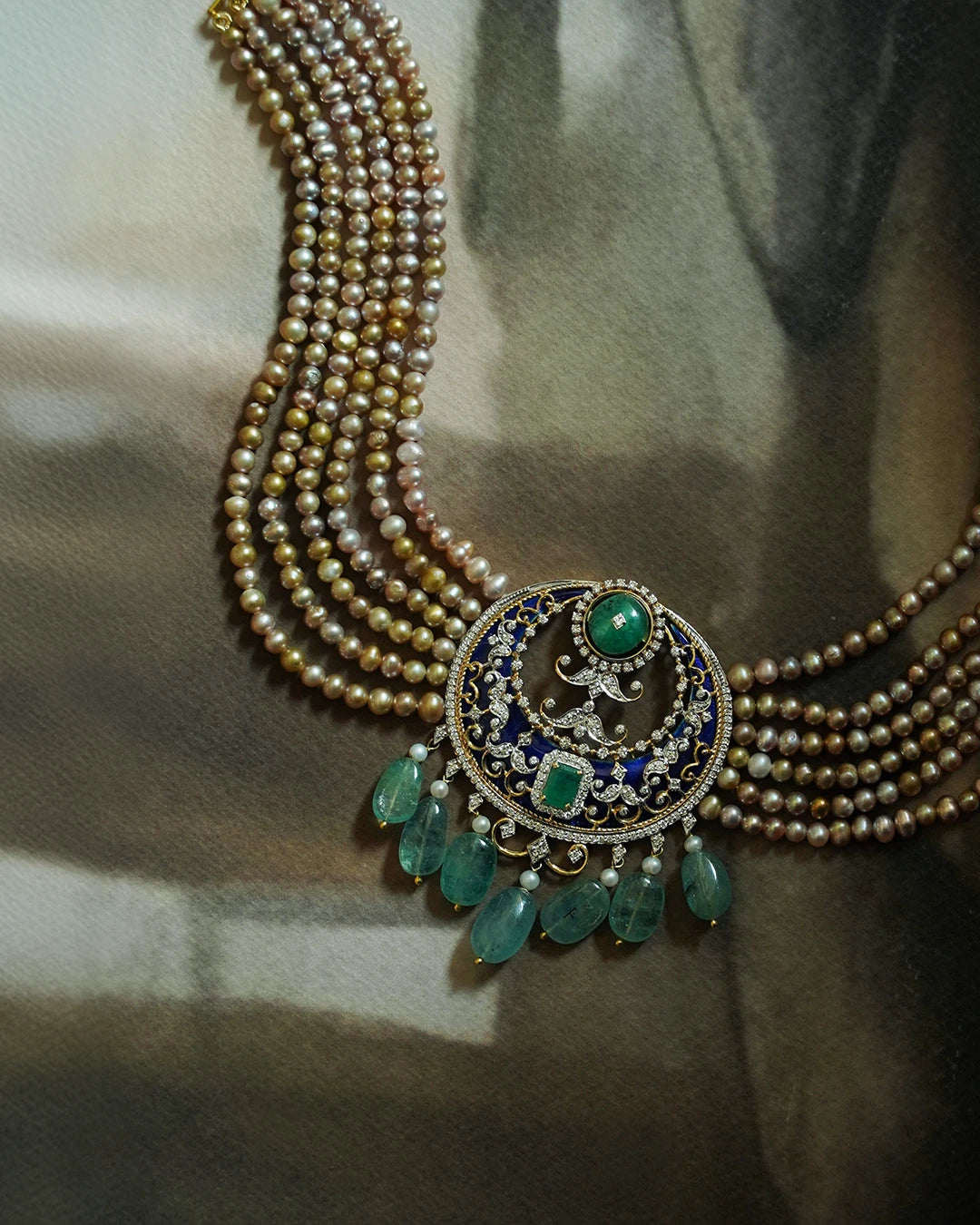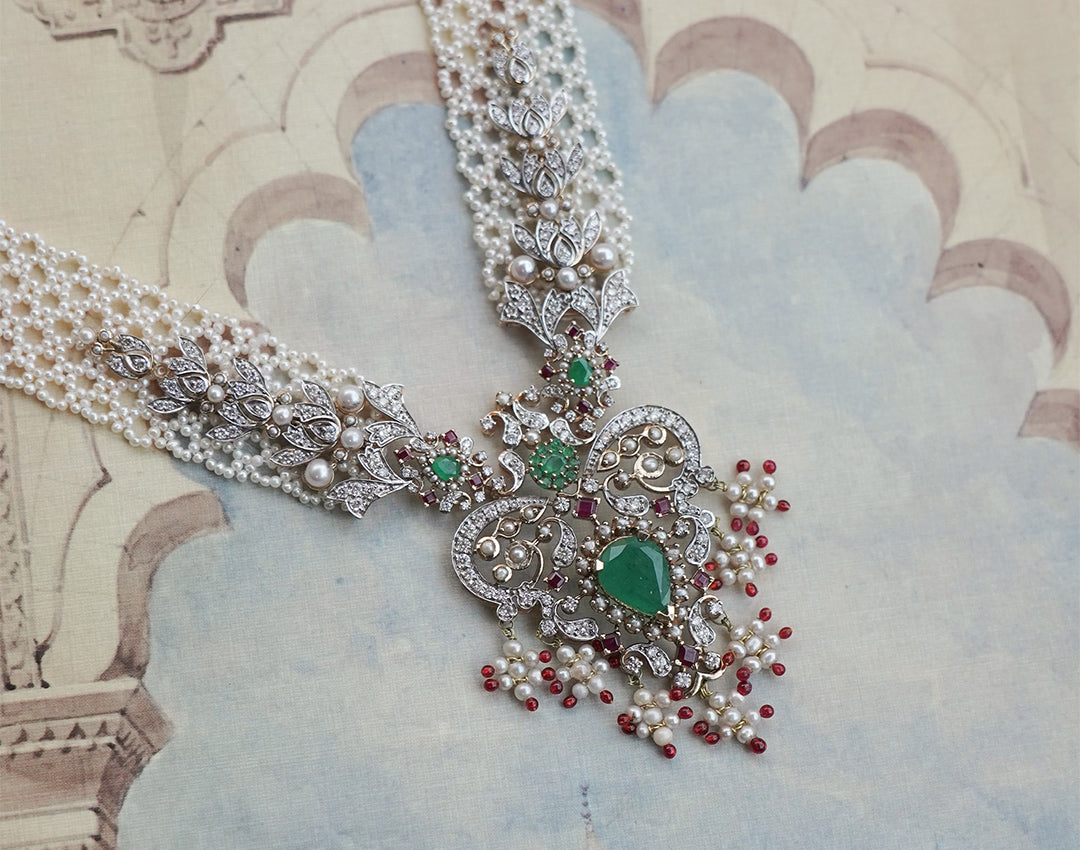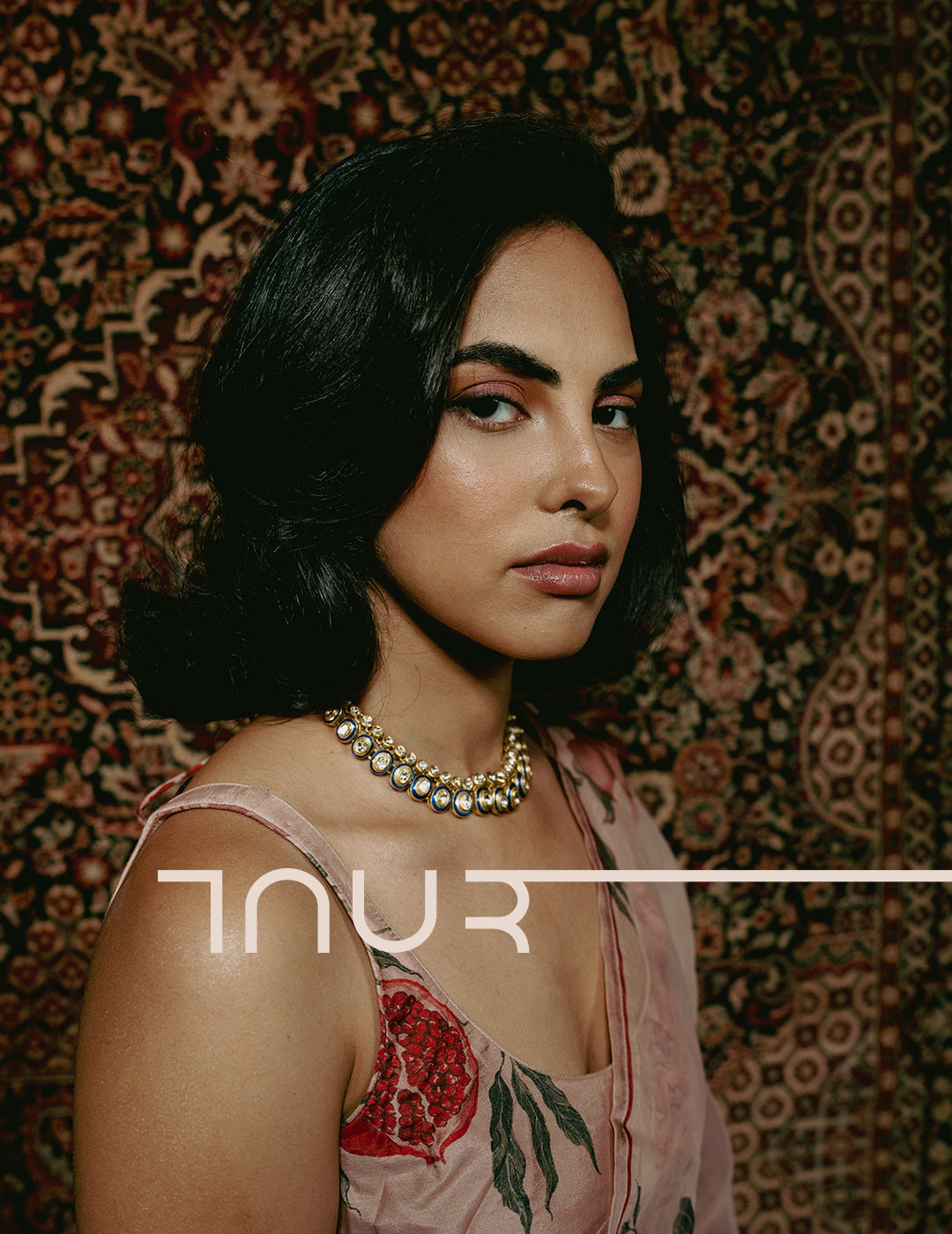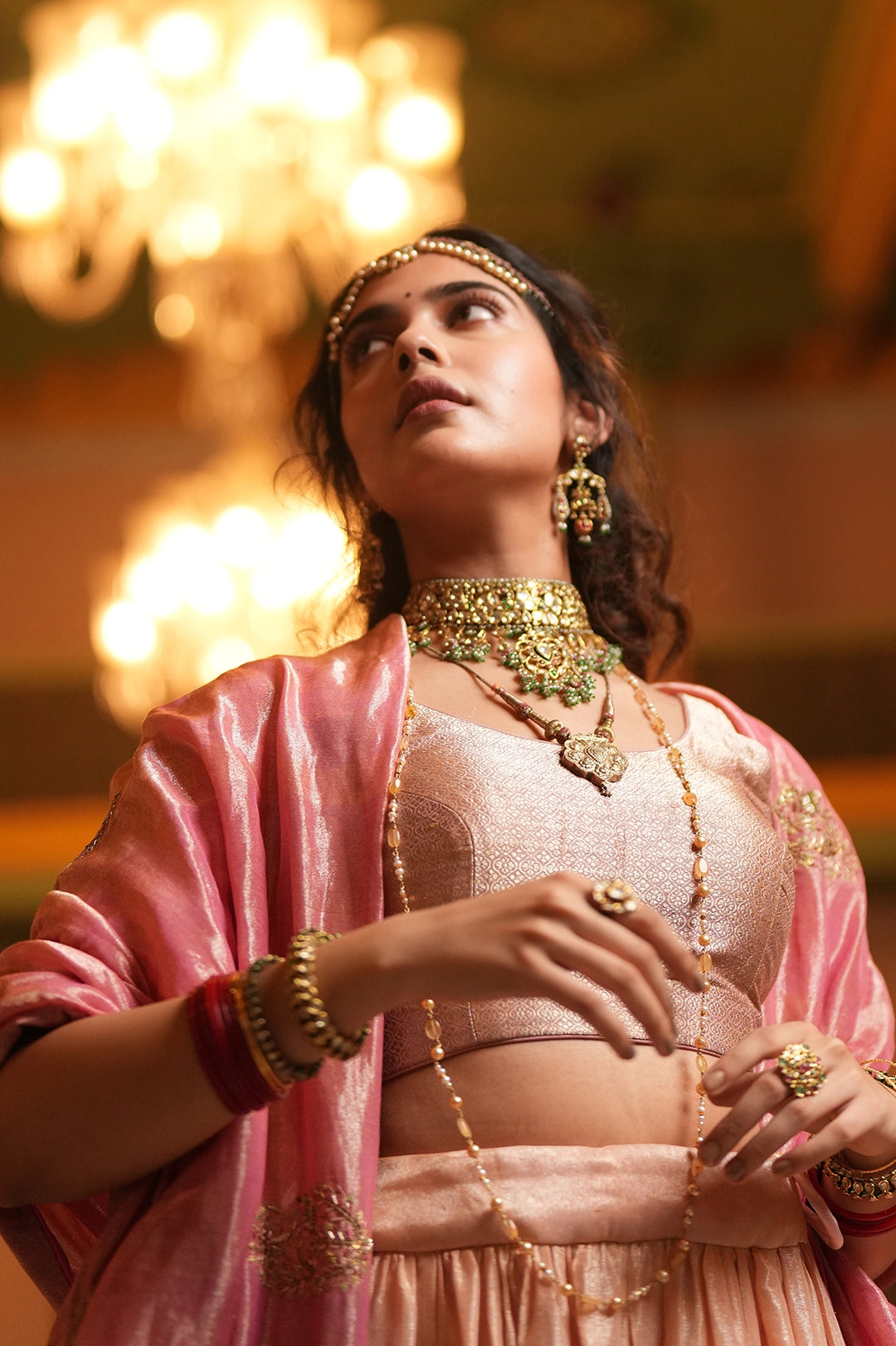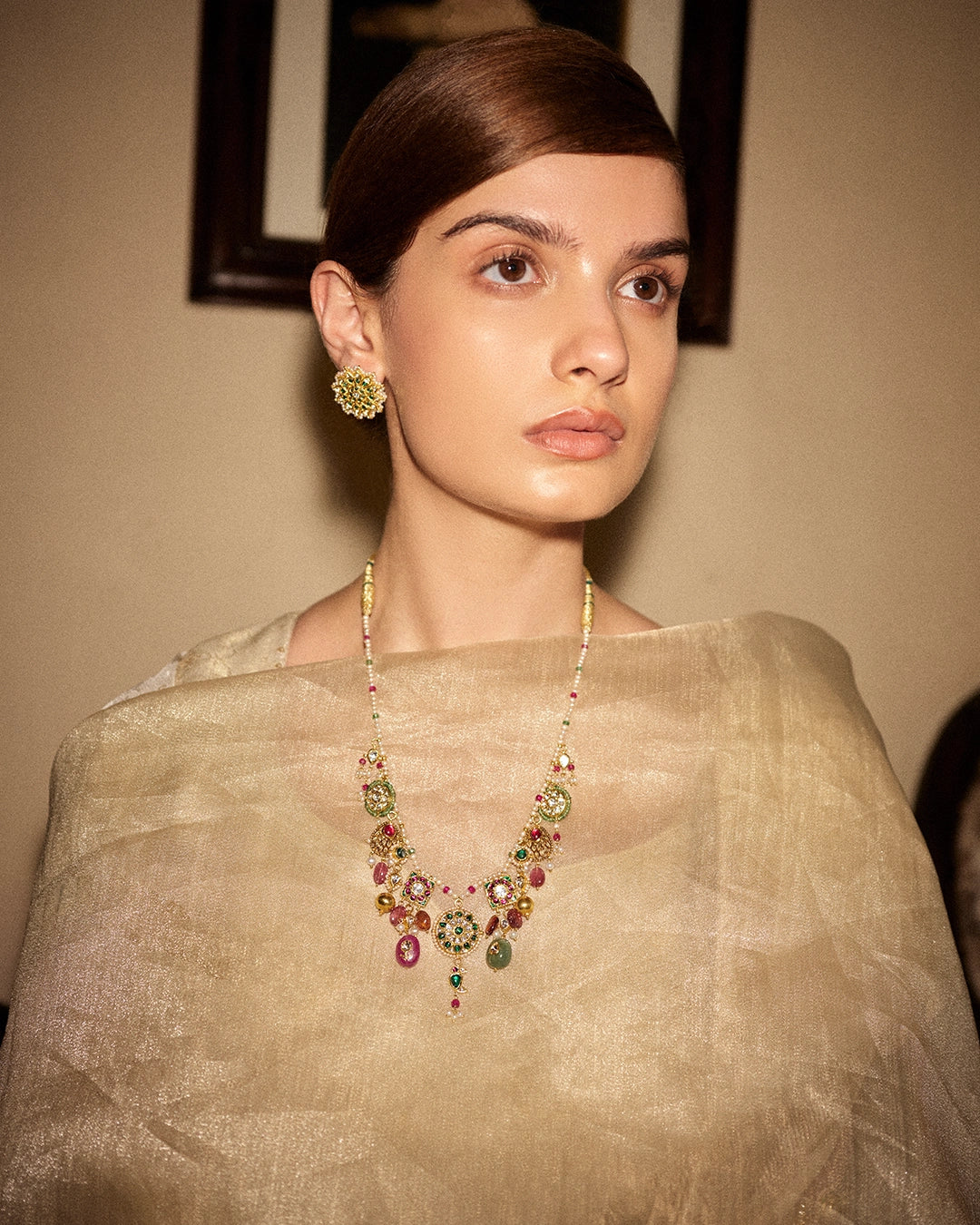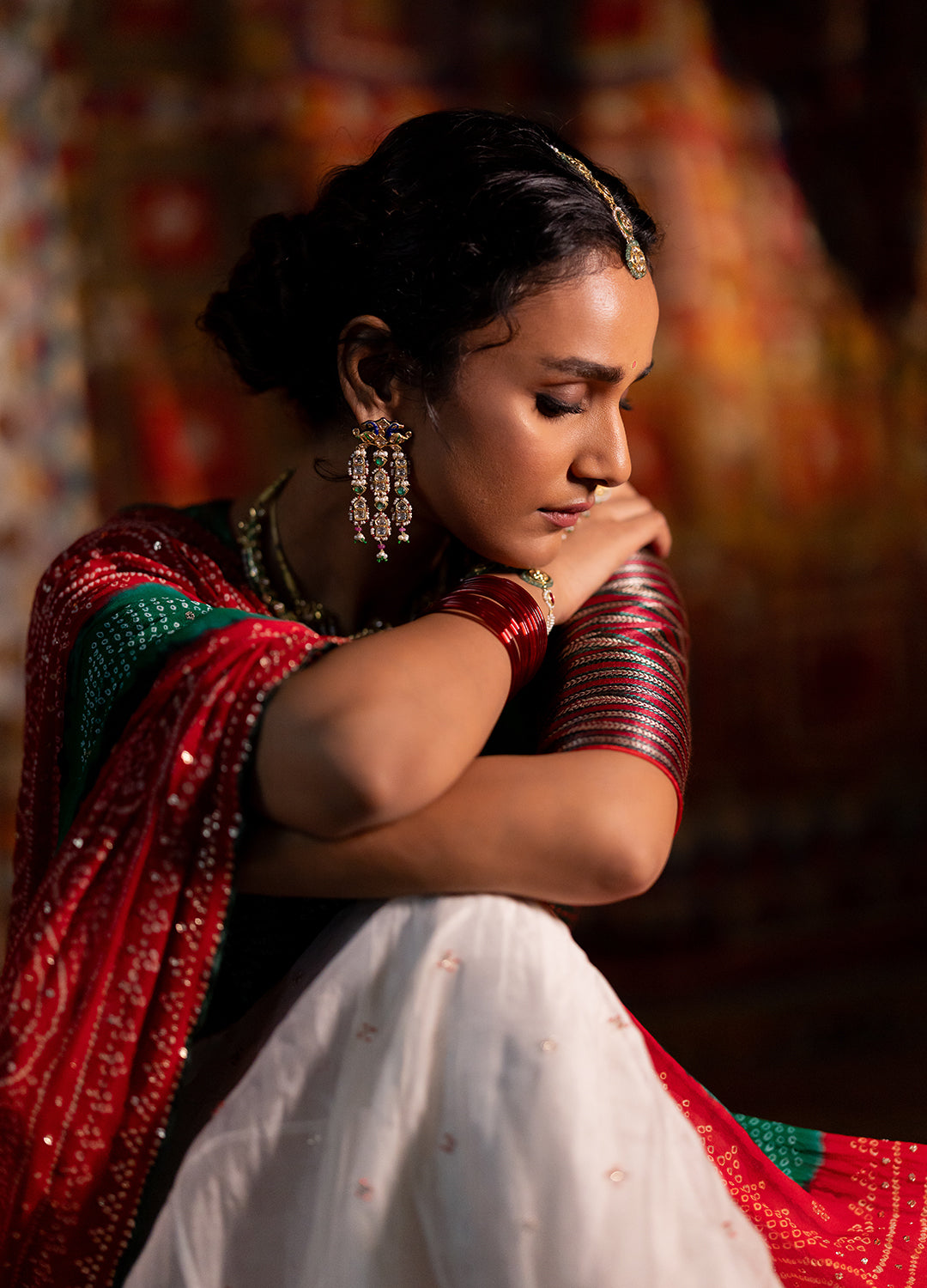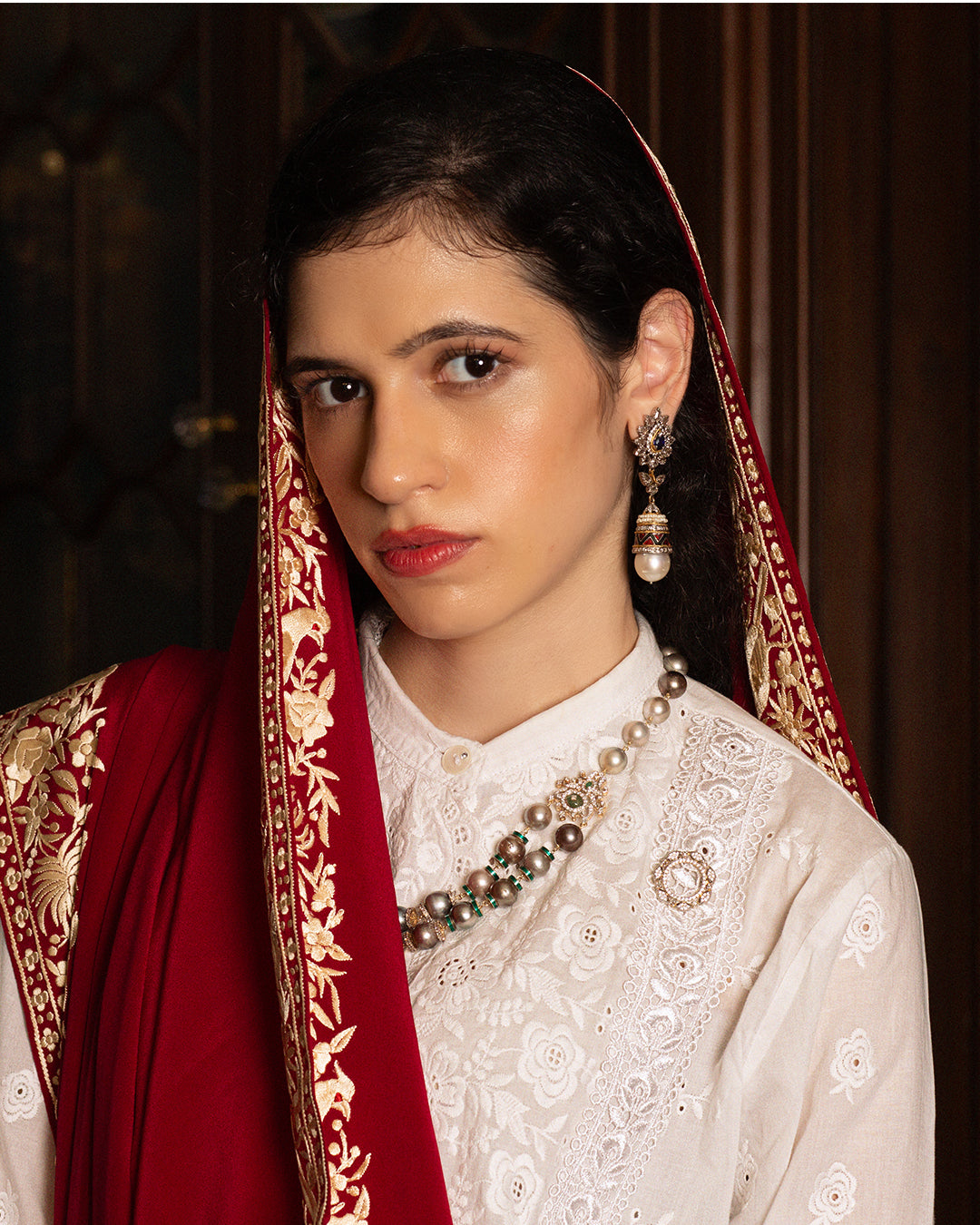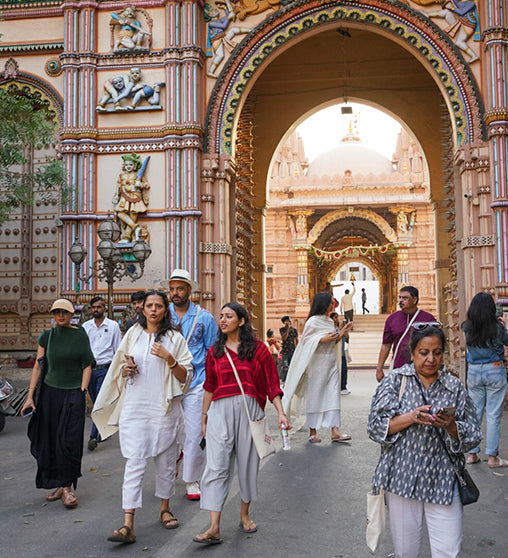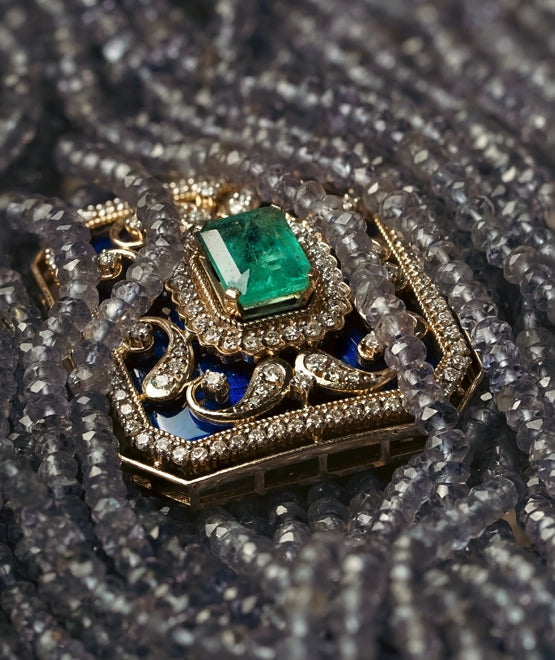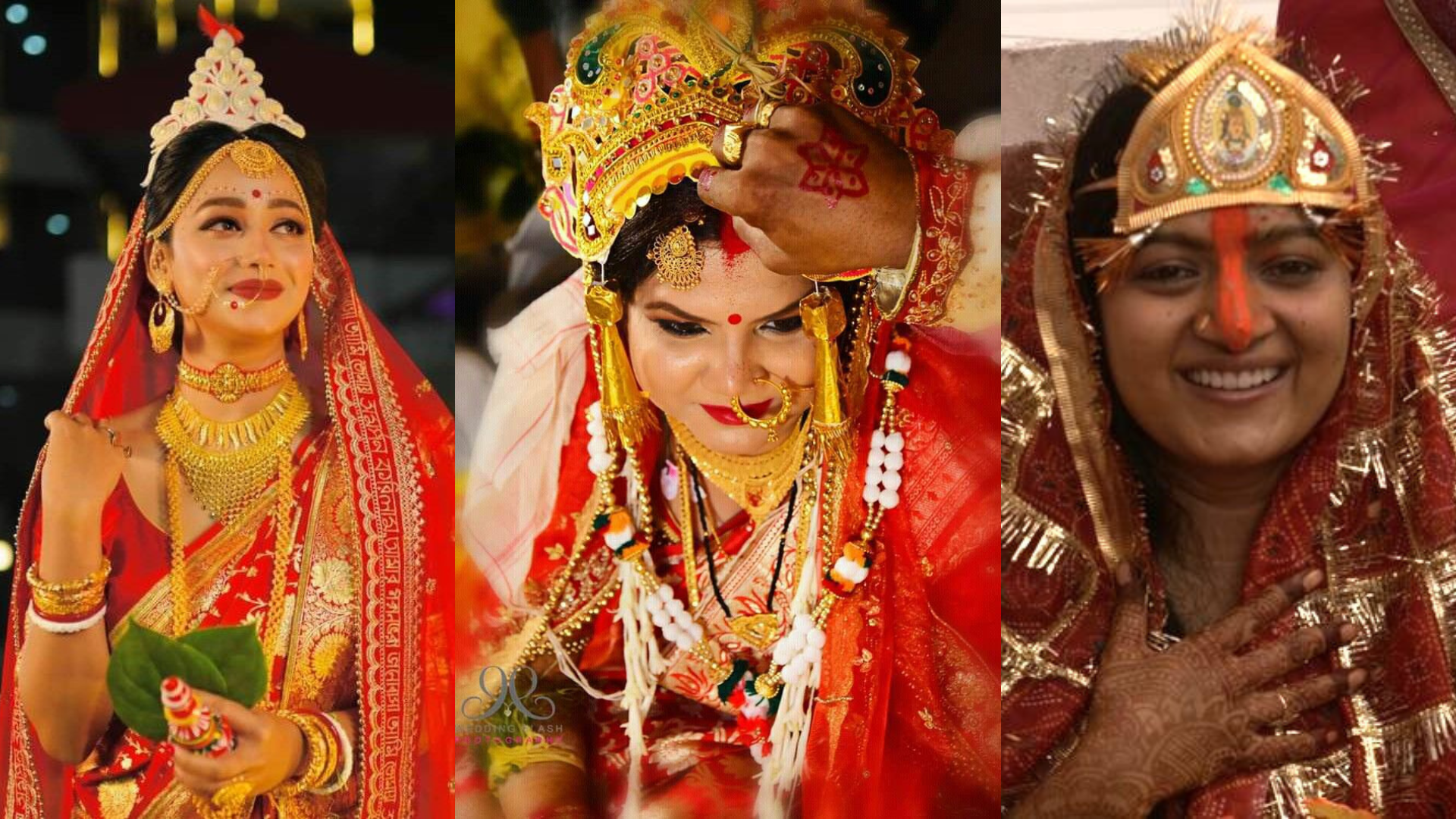The colorful and diverse country India is, it hosts an expansive diversity of cultures. Each has its own distinct style, beauty, history, peculiarities, and level of exuberance. Indian weddings across these cultures have varying traditions, dresses, and even wedding jewelry. And knowing about them can tell us a lot about the culture of that place. This time, it’s the turn of the land where the sun rises the first—the East.
East Indian Wedding Jewelry: A Cultural Odyssey
The different states of East India have both similarities and differences in their cultures and traditions. Let’s go through some of the unique wedding jewelry of some of the states of East India.
Bihar

Image courtesy: Pinterest
Mauri
Mauri is a type of bridal head jewelry traditionally made of the leaves of mango or date. These days, it is also made of decorative paper and mirrors. Brides from Bihar wear it on their wedding day.
Tikli
Tikli is a type of bridal hair jewelry that the bride wears along the central parting of her hair. It is similar to the maang tikka.
Dholna
Dholna is an ornate wedding necklace worn by the bride on just on her wedding day but also on other festive occasions. Its highlight is an exquisite gold locket in the shape of a drum. The bride's elder brothers-in-law gift her the dholna in a traditional red thread at the wedding mandap. She wears it as long as her spouse is alive.
Lahthi
Lahthi bangles are an important part of the wedding jewelry of a bride from Bihar. They are made of lac, a natural resin secreted by insects. The lac is gradually heated over a slow flame and fashioned into the shape of bangles and bracelets.
Bichhua
Bichhua is a symbol of matrimony for women in Bihar. It is a piece of Indian wedding jewelry given to the bride by her maternal home. After the pheras and ceremony of applying the sindoor (vermillion), the bride's sister-in-law puts the Bichhua on her feet. The bride also wears silver rings on the big toe, known as Anavat. All these pieces of bridal jewelry are given to the bride by her maternal grandmother. She can remove the Anavat a few days after the wedding.
West Bengal

Image courtesy: Pinterest
Topor
Topor is a pristine white crown made from white cork, called shola in Bengali. This piece of Indian wedding jewelry symbolizes a new beginning and auspicious occasions. A Bengali bride typically enters her wedding ceremony wearing the Topor and, occasionally, a transparent veil on top of this headdress.
Shonar Mukut
The Shonar Mukut, translating to the Golden Crown, is an Indian-style tiara that a Bengali bride wears on her wedding day. It is a symbol of wealth and success.
Kaan Bala
The Kaan Bala is a statement Bengali bridal jewelry piece that brides have been wearing for centuries. It features a leaf-like design made of gold that mimics the curve of the ear and is large enough to cover the entirety of it.
Sita Haar
The Sita Haar is perhaps one of the longest necklaces in the wedding jewelry of a Bengali bride. It is made up of several thin gold chains that are joined by an elaborate locket that is frequently adorned with floral designs.
Shakha Pola
Bengali brides wear red and white bangles both during and after their wedding. Conch shells are used to make the Shakha, a white Indian bracelet, while red coral is used to make the Pola, a red Indian bracelet. It is customary for the bride to take extra precautions to avoid breaking these bangles in the first year of marriage as it is considered a bad omen.
Loha
The Loha is a gold-plated iron bangle gifted to the bride by her mother-in-law and is an important part of her bridal jewelry. While the Shakha and Pola represent heath, wealth, and success for the bride, the loha symbolizes blessings for both the bride and groom and wishes for the strength of their marriage.
Ratanchur
Also known as a Haath Phool, a Ratanchur often has three to four chains that sprout from a central pendant into rings. Made of gold, it adds an embellished flair to the look of the bride.
Mantasha
The Mantasha is a finely crafted wristlet with golden lacework and a small ring that hooks onto one of the bride's fingers. Typically, the ratanchoor is avoided if the bride chooses to wear a mantasha.
Chur and Bala
Chur is a thick and wide single gold Indian bracelet handed down by the mother to her daughter over the generations. The Chur features vintage and detailed embossing. Bala or Kada are heavy bangles that resemble cuffs and are typically worn in pairs.
Nupur
Nupur is a traditional anklet adorned on the feet by the Bengali bride. This Indian wedding jewelry is made of silver with stones encrusted into it.
Odisha

Image courtesy: Pinterest
Sinthi
In the Odia language, the Sinthi is the local name for the Maang Tikka, head jewelry worn by brides in Odisha. The Sinthi has a large pendant and uses a different style than the typical Maang-Tika. The gold chain is adorned with stones and pearls.
Shanka Palaa
The Shanka Palaa are bangles similar to the Shakha Pola worn by Bengali brides and married women. While in some parts, it is compulsory for brides to wear Shanka Palaa, in other parts, of the state, Shanka is compulsory.
Cheeka
The choker necklace is known as Cheeka in Odia. Odisha is famous for its filigree work, which can be seen in the wedding jewelry of Odia brides. Some of the other well-known bridal necklaces, apart from the Cheeka are the Kathu chain, and the multilayered gold necklace called the Rani Haar.
Notha
The Nath is known as Notha in Odia. It is a heavy gold nose ring with pearls and gemstones set into it.
Other Indian wedding jewelry pieces belonging to the trousseau of an Odia bride are the Nuluka (circular barbell for the nose septum), Kalara Haara (a necklace with designs similar to leaves of bitter gourd plant), Chandra Haara (a three-layered silver Kamar bandh for the waist), Antaa Biccha or Gotha (a thin silver waist chain), Mahala (a circular crocodile/serpent-mouthed barbell silver anklets) and Maankia (metallic round silver anklets).
The state of Odisha shares a lot in common with West Bengal, and its wedding jewelry is no different in terms of use, pronunciation, and design. Therefore, the significantly unique wedding jewelry piece is Sinthi.
